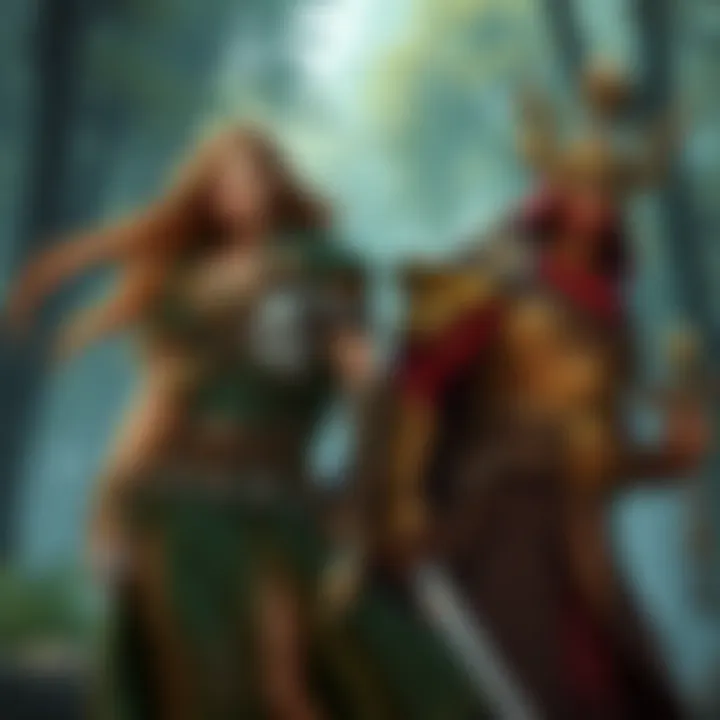Multiclass Druid/Cleric | New Players Weigh Healing Successes and Strategies
Edited By
Samir Patel

A rising number of players are exploring the multiclass options for druids and clerics in Dungeons & Dragons, creating a buzz on various user boards. The mix of playstyles raises questions about balance and effectiveness in healing roles, as new players navigate their journeys through this complex decision.
Exploring the Druid and Cleric Duality
With a personal connection to healing, some players are torn between the roles of a Life Cleric and a Druid. "I loved being the group's combat medic," one player stated, emphasizing the healing potential of the cleric. However, they appreciated the elements of chance tied to the Druid's healing abilities, notably in spells like Healing Word and Goodberry.
Community Insights on Multiclassing
While many enthusiasts encourage players to explore multiple classes, opinions vary significantly:
Some suggest picking a primary class before branching out, advising against more than two levels in a secondary class. "Typically, healing is only useful if it prevents someone from hitting zero HP," one commenter explained.
Others advocate for single-classing, claiming it provides stronger spells and quicker progression. One proponent noted, "Check out Stars for reliable healing boosts while maintaining Druid flexibility."
Key Considerations for New Players
When considering multiclassing, several users shared vital insights to guide new players:
Class Levels: Begin with one class until Level 5 to unlock significant perks before switching.
Narrative Tie-In: Create a backstory that integrates both classes, such as a Life Cleric who is also a nature-loving healer.
Flexibility vs. Focus: Balancing healing and Druidic roles can lead to unique character builds, emphasizing the need for thoughtful choices moving forward.
"I wouldn't recommend multiclassing to a beginner unless you know why you're doing it—often, it just makes your character weaker."
Key Takeaways
🔹 Many agree on focusing on one class initially, especially for newcomers.
🔹 Multiple perspectives shape what makes a character effective—healing, gaining buffs, or role-playing.
🟢 Character growth can enhance gameplay, merging both cleric and druid traits into one imaginative build.
In this ever-shifting scene, new players are left to ponder—what does effective healing look like for them? As discussions evolve, it’s clear that experimenting with dual roles sparks excitement among the D&D community.
Future Healing Dynamics
As players continue to experiment with multiclassing in Dungeons & Dragons, there's a strong chance we will see an increase in hybrid character builds. With a rising interest in class combinations like the Druid and Cleric, experts estimate around 60% of new players might opt for dual roles by mid-2026. This shift may lead to innovative strategies that redefine traditional healing roles, as players seek to maximize effectiveness while still enjoying the role-play aspects of both classes. However, challenges like balancing spellcasting and level progression will likely persist, forcing players to devise clever tactics as they navigate this evolving landscape.
A Refreshing Perspective on Combos
This situation mirrors the early days of the dual-processor era in computer technology. Just as tech enthusiasts experimented with combining different types of processors to enhance performance, gamers are applying the same innovative spirit to their class choices in D&D. Initially, the outcome seemed chaotic, as balancing power and speed proved tricky. However, over time, these hybrid systems revolutionized computing, paving the way for more efficient machines. Similarly, as players grow familiar with the intricacies of multiclassing, we may witness unexpected dynamics that change how healing and character builds are perceived in the game.
